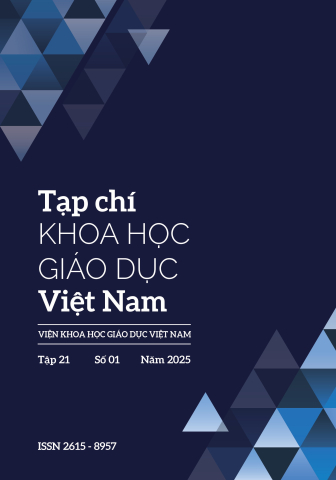[1] Tổng cục Thống kê, (2018), Việt Nam - Điều tra Quốc gia về Người khuyết tật năm 2016, NXB Thống kê.
[2] Van Le Nga, (2016), Education for all children with visual and multiple disabilities in Vietnam, The international council for education of people with visual impairment.
[3] Nguyễn Đức Minh, (2008), Giáo dục trẻ khiếm thị, NXB Giáo dục.
[4] Sacks, S. Z., & Silberman, R. K, (1998), Educating students who have visual impairments with other disabilities. Paul H. Brookes Publishing Co., PO Box 10624, Baltimore, MD 21285-0624; World Wide Web: http://www. pbrookes. com.
[5] Phạm Minh Mục - Trần Thu Giang, (2012), Phát triển giao tiếp cho trẻ khiếm thị đa tật, Tạp chí Khoa học Giáo dục, số 80, tr.43-46.
[6] Trịnh Thị Thu Thanh, Nguyễn Thị Hằng, (4/2021), Mù điếc và hội chứng rối loạn phổ tự kỉ: Những đặc điểm giống nhau - Sự tương đồng trong phương pháp giáo dục, Tạp chí Khoa học giáo dục, số 40, tr.47-51.
[7] Nguyễn Thị Thắm, (2017), Giáo dục kĩ năng tự phục vụ cho trẻ khiếm thị đa tật, Tạp chí Khoa học Trường Đại học Sư phạm Hà Nội, Volume 62, Issue 9AB, tr.173- 180.
[8] Nguyễn Thị Thắm, (2018), Đặc điểm kĩ năng giao tiếp của trẻ khiếm thị đa tật và một số biện pháp phát triển kĩ năng giao tiếp, Tạp chí Khoa học, Trường Đại hoc Sư phạm Hà Nội, ISBN 2354 - 1075 - Volume 63, Issue 9AB, tr.348 – 357.
[9] Sacks S.Z & Zatta, M.C, (2016), Keys to Educational Success: Teaching Students with Visual Impairments and Multiple Disabilities, AFB Press


